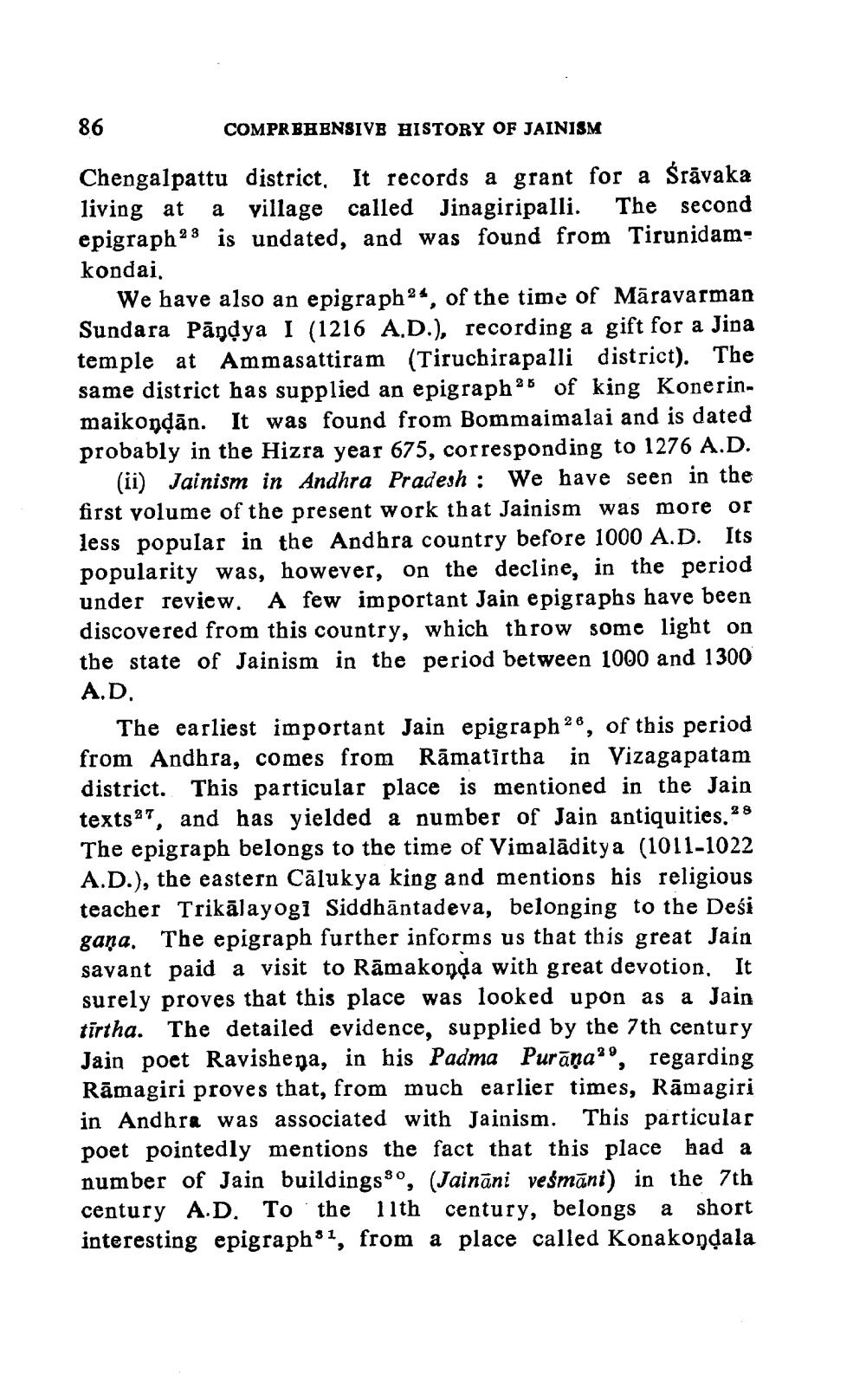________________
86
COMPR BHENSIVE HISTORY OF JAINISM
Chengalpattu district. It records a grant for a Śrāvaka living at a village called Jinagiripalli. The second epigraph 2 3 is undated, and was found from Tirunidam: kondai,
We have also an epigraphs, of the time of Māravarman Sundara Pāndya I (1216 A.D.), recording a gift for a Jina temple at Ammasattiram (Tiruchirapalli district). The same district has supplied an epigraph 25 of king Konerinmaikondān. It was found from Bommaimalai and is dated probably in the Hizra year 675, corresponding to 1276 A.D.
(ii) Jainism in Andhra Pradesh: We have seen in the first volume of the present work that Jainism was more or less popular in the Andhra country before 1000 A.D. Its popularity was, however, on the decline, in the period under review. A few important Jain epigraphs have been discovered from this country, which throw some light on the state of Jainism in the period between 1000 and 1300 A.D.
The earliest important Jain epigraph 28, of this period from Andhra, comes from Rāmatirtha in Vizagapatam district. This particular place is mentioned in the Jain texts??, and has yielded a number of Jain antiquities. 2 8 The epigraph belongs to the time of Vimalāditya (1011-1022 A.D.), the eastern Cālukya king and mentions his religious teacher Trikālayogi Siddhāntadeva, belonging to the Desi gaņa. The epigraph further informs us that this great Jain savant paid a visit to Rāmakonda with great devotion. It surely proves that this place was looked upon as a Jain tīrtha. The detailed evidence, supplied by the 7th century Jain poet Ravishena, in his Padma Purāņa'', regarding Rāmagiri proves that, from much earlier times, Rāmagiri in Andhra was associated with Jainism. This particular poet pointedly mentions the fact that this place had a number of Jain buildingsso, (Jaināni veśmāni) in the 7th century A.D. To the 11th century, belongs a short interesting epigraph81, from a place called Konakondala




